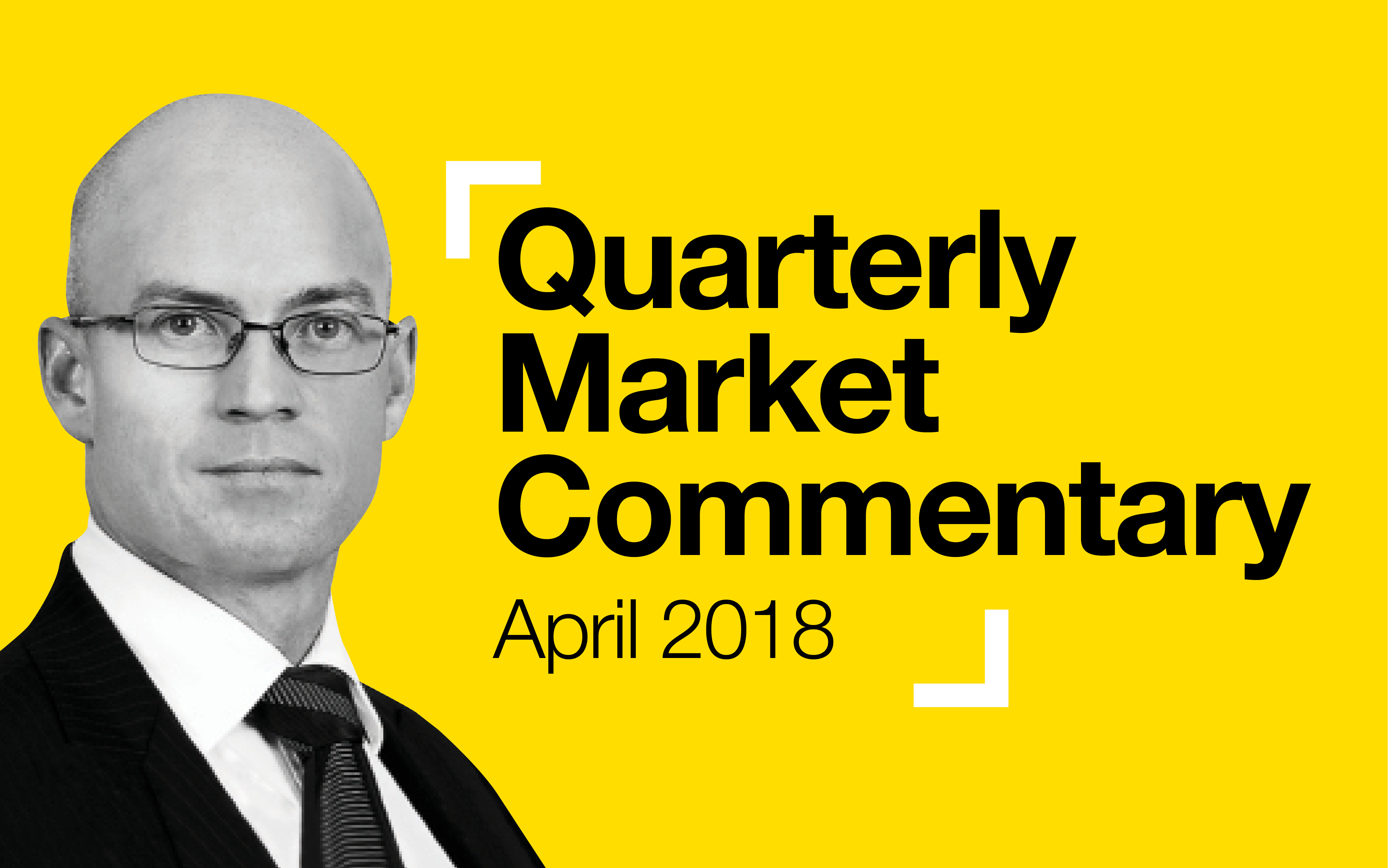
This article was prepared by Michael Furey, Principal of Delta Research & Advisory, on behalf of the HPartners Group.
Global Economy
The global economy has strengthened over the past 12 months as unemployment decreases across most major regions suggesting potential for near full employment. This has led to higher bond yields, particularly in the US, as expectations for higher inflation becomes the norm.
Also fuelling higher inflation expectations in the US are some of the actions of President Trump. This includes reducing corporate tax rates and talking tough on import Tariffs. Whilst a reduction in corporate tax rates is stimulatory to the US economy as it will increase net cashflow to businesses, shareholders, and perhaps employees; increasing import tariffs is highly unlikely to be good for the US economy but will increase the prices of goods sold. High inflation and higher interest rates is certainly the major theme in financial circles.
Global Markets
Sticking with the US, Jerome Powell replaced Janet Yellen as Chair of the Federal Reserve. Whilst Powell’s reputation is similar to Yellen’s in terms of being a “Monetary Dove” (i.e. one who values low unemployment over low inflation) he nonetheless quickly increased cash rates at the most recent March meeting resulting in the US having higher cash rates than Australia for the first time since 2000.
The higher inflationary expectations pushed US 10-year bond yields close to 3% during February and this triggered an equity market sell-off that reverberated around the world. This was the first serious bout of equity market volatility since 2016 which is one of the longest periods of low volatility in equity market history. Trump’s Tariff announcement in March also created a global equity market sell-off. Most equity markets are down during 2018, volatility is clearly higher, but after the strong returns of 2017, any mini-correction should be unsurprising as the low volatility was unprecedented and unsustainable following unwinding of quantitative easing. Looking ahead, if higher inflation does occur, higher equity market volatility should be expected over the remainder of 2018.
Global Risks
The major risks relate to what is already largely known. That is the geopolitical issues regarding the United States, whether it be increasing import tariffs, or increasing tensions with North Korea, or China and the aforementioned concerns around inflation and higher rates.
If higher than expected inflation comes through, it is likely to result in sharply rising interest rates meaning both bond and equity prices could fall sharply. Related to this is the possibility of Central Bankers increasing interest rates too sharply to avoid potential high inflation, therefore resulting in slowing the economy too much and upsetting both equity and credit markets. Please note, these are highly unlikely but still a possibility.
Australian Economy
Australia’s economy continues to grow at a below-trend 2.7%. Looking ahead, the Reserve Bank of Australia does forecast a stronger rate of economic growth in Australia and this is based on positive business conditions and increasing business investment. The biggest component of the Australian economy, household consumption, has been growing slowly and with high levels of debt is unlikely to contribute too much towards future economic growth.
Unemployment has been steady for some time although wages growth has been quite low. Whilst higher inflation is expected overseas, it is not expected yet in Australia and is completely dependent on a much stronger economy. That said, a stronger Australian economy that produces higher inflation is likely to require sustained or higher commodity prices, a lower Australian dollar, and/or continued infrastructure and property construction, ably assisted by government spending.
Australian Markets
The Reserve Bank continues to keep the cash rate at 1.50% which has been at this record low level since August 2016. Bond markets are currently pricing in one 25bps rise some time over the next 12 months but there are many economists predicting the next movement may even be down. This is due to the belief that unemployment is a little too high, wage inflation is too low, and further stimulation is required to improve these measures.
Australian sharemarkets have followed global market’s volatility and returned a negative 4% in the March quarter. Worse than this result was the Australian Property Securities market, where the S&P/ASX 200 A-REIT index return lower than -6% as global bond yields increased. Compared to the rest of the world, Australian bonds and equities now have much lower valuations therefore increasing the longer-term return outlook. That said, along with global markets, it is highly likely the long run low volatility in equity markets is over with increasing bouts of high volatility over the remainder of 2018.
Australian Risks
The biggest risk for Australian investors and economy appears to be largely out of Australia’s control … trade war via import tariffs between China and USA. This may negatively impact China’s economy such that it lowers its demand for Australian commodities. Given China is Australia’s largest export nation, this is obviously a significant concern.
Australia has amongst the highest household debt levels in the world so any increases in interest rates is likely to stress household balance sheets. Sydney residential property prices have declined over the past 12 months and higher interest rates could accelerate this decline, impacting confidence in the strongest part of Australia’s economy, and therefore spending and economic growth. There are many commentators suggesting Australian interest rates are likely to follow the USA’s higher, but the weakness in Australia’s economy does not suggest higher rates yet.
Latest News Articles
Back to Latest News
End-of-Year Money Checklist: 10 Things To Do Before NYE

Redundancies in Australia Rising Quietly in White-Collar Sectors


